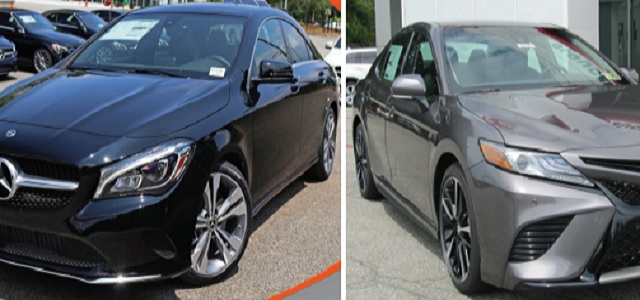
The facts and the fiction
Kampala, Uganda | MOTORING GURU | Regarding fuel consumption, Ugandan motorists can be grouped into two; those that watch the fuel gauge and those that drive on empty. Both carry tiny jerry cans in readiness for a dash to the fuel station whenever they run out. Faced with this scenario, one would expect that Ugandan motorists know quite a bit about fuel economy and are fuel consumption aware. In fact, anecdotal talk gives that impression.
“Oh, don’t buy that vehicle, those are fuel guzzlers”
“On buy that, those ones merely lick fuel”
How often do you here such talk? Usually they will tell you that Toyotas consume less than BMWs or Mercedes Benz. Unfortunately it is all misinformed street talk. The reality is quite different.
Do you know, for instance, that the BMW 440i Coupe C –class with the 6 cylinder, 3 litre engine consumes 7.8 litres per 100 while the BMW 230i Coupe S –class with the smaller 2 litre, 4 cylinder engine consumes 8.4. litres per 100km? And the Ford Focus, with the smaller 2 liters engine consumes 8.5 litres, the 2 Litre Honda Accord 9.2 litres per 100kms? Even the Toyota Corolla, with its tiny 1.8 Litre engine consumes 7.6 litres of fuel. That is not far from the consumption of the Mercedes Benz CLA250, C-Class with a 2-liter engine.
So the only value from general talk about the fuel consumption of different vehicles and models is the recognition that fuel is a daily expense and should be a major determinant of which car one drives. It is best to look at the manufacturer’s information for each vehicle. That way one can pick the most fuel efficient and appropriate size.
But motorists should also know that fuel economy does not depend on the car alone. It matters how you drive? Do you drive only when you need to? Do you follow the manufacturers’ operation and maintenance recommendation for your vehicle?
Merely following fuel ratings for various vehicles is not enough. It may help you make an informed, energy efficient purchase decision; especially when you compare different vehicles. But you must remember that vehicle manufacturers give these ratings based on tests carried out in standard, controlled laboratory and analytical procedures. They are not the condition under which you drive your vehicle on the road.
Fuel consumption ratings show the fuel consumption that may be achieved with a properly maintained vehicle driven with fuel efficiency in mind. The ratings provide a reliable comparison of the fuel consumption of different vehicles. However, no laboratory test can simulate all combinations of conditions that may be experienced by drivers. Your vehicle’s fuel consumption will vary from its published fuel consumption ratings, depending on how, where and when you drive. The drivers acceleration, driving speed, the age and condition of your vehicle, temperature, weather, traffic and road conditions, the drivetrain, and the powered accessories (like air conditioning) installed on your vehicle will affect the fuel consumption of your vehicle.
In addition, small variations in vehicle manufacturing may cause fuel consumption differences in the same make and model, and some vehicles do not attain optimal fuel consumption until they are “run in” for about 6,000 to 10,000 km.
Generally, however, these 5 fuel-efficient driving techniques will reduce your fuel consumption and carbon dioxide emissions by as much as 25%; accelerate gently, maintain a steady speed, anticipate traffic, avoid high speeds, and coast to decelerate.
 The Independent Uganda: You get the Truth we Pay the Price
The Independent Uganda: You get the Truth we Pay the Price


